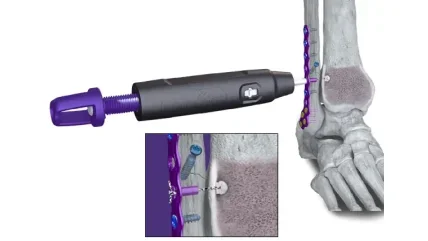
US-based medical device company Paragon 28 has rolled out the R3FLEX Stabilisation System to treat ankle syndesmosis after injury due to an ankle fracture or sprain.
According to the company, the R3FLEX System provides surgeons with the ability to precisely adjust and visualise tension during the repair as needed with a simple turn of the handle.
Its design and function allow surgeons to restore patients’ soft tissue to more natural anatomy, mitigate arthritic response and minimise the risk of hardware removal, said Paragon 28.
The company is offering the R3FLEX Stabilisation System in a single sterile kit that includes both the implants and instruments to simplify surgical workflow and inventory management.
Paragon 28 CEO Albert DaCosta said: “The R3FLEX Stabilisation System is the crown jewel of our syndesmotic injury repair portfolio with novel features that give surgeons the ability, for the first time, to precisely adjust and visualise tension during a repair with the simple turn of the handle.
“Dynamic tensioning is incredibly important, and we believe it will help mitigate arthritic response, which is a primary complication following these types of ankle fractures.”
Paragon 28 said that during the preparation and implantation of the R3FLEX Implant, the tibial implant rests on the internal surface of the tibia rather than external to the cortical bone.
The screws and other flexible fixation products may require hardware on the surface of the tibial bone, which may increase the risk of injury to the saphenous nerve and great saphenous vein.
R3FLEX implant also uses a short suture loop between the all-suture anchor in the tibia and the titanium fibular component to create a strong repair construct.
The fibular component contains an intrinsic thermoplastic urethane bumper to enable micromotion in the repair, allowing the fibula to move in a controlled manner.
Furthermore, Paragon 28 said that the R3FLEX Stabilisation System expands its soft tissue offering.






